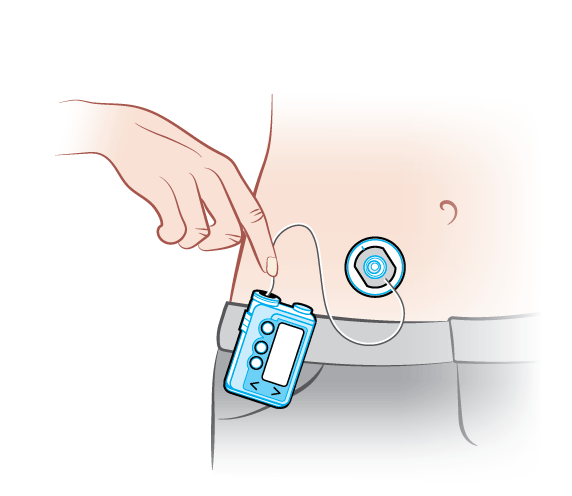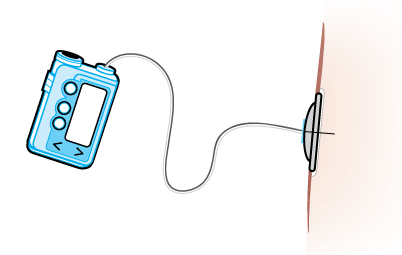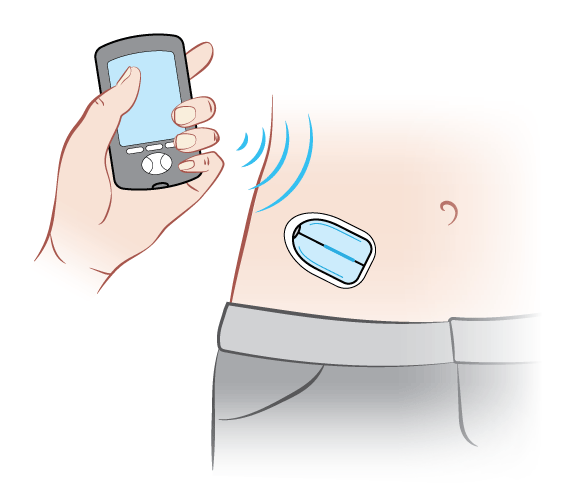There are different types of insulin pumps. All insulin pumps attach to your body. Some attach with tubing and some attach as a pod taped to your skin.
Each insulin pump has a reservoir of rapid-acting insulin. The insulin flows into your body through a small tube called a cannula that you insert under your skin.
Insulin pumps with tubing
Insulin pumps with tubing (for example Medtronic, Tandem, and Ypsomed) are about the size of a deck of cards. You can keep them with you in many ways:
- attached to your belt or waistband
- strapped to your arm or leg
- tucked inside your pocket or bra
The tubing connects the pump (with the insulin reservoir) to the cannula under your skin. In the first image below, the cannula goes into the belly. But you can also put the cannula in your bum, leg, or arm. The tubing and cannula together are called an infusion set. The image below shows what an insulin pump with tubing looks like when you wear it.

Insulin pump with tubing inserted in the belly.
Image credit: Alberta Health Services
You need to put in a new cannula every 2 to 3 days. Some cannulas are straight and others are angled. Most cannulas are soft but you insert them with a needle. You remove the needle after you put in the cannula, and the soft cannula stays under your skin. You may choose to use metal cannulas instead. The image below shows what a 90-degree, also called straight, cannula looks like under the skin.

A 90-degree, or straight, cannula under the skin.
Image credit: Alberta Health Services
Insulin pumps without tubing
Insulin pumps with no tubing (like Omnipod) have a pod with insulin inside. The pod is about the size of half a deck of cards and sticks to your skin.
You also carry a Personal Diabetes Manager (PDM) that’s about the size of a cell phone. You can program the PDM, and it communicates with the pod, as you can see in the image below.

The PDM communicates with the pod.
Image credit: Alberta Health Services
You can insert the pod into your belly, but you can also insert it in other places like your arm.
The image below shows what the pod and cannula look like from the side after they’re inserted. The pod sticks to your skin and the cannula goes under your skin.

PDM and pod with the cannula inserted under the skin.
Image credit: Alberta Health Services
If you aren’t sure how you’ll feel wearing an insulin pump every hour of every day, try carrying a deck of cards with you for a week. You can also contact your diabetes educator or insulin pump company for an empty pod to stick to your skin.
